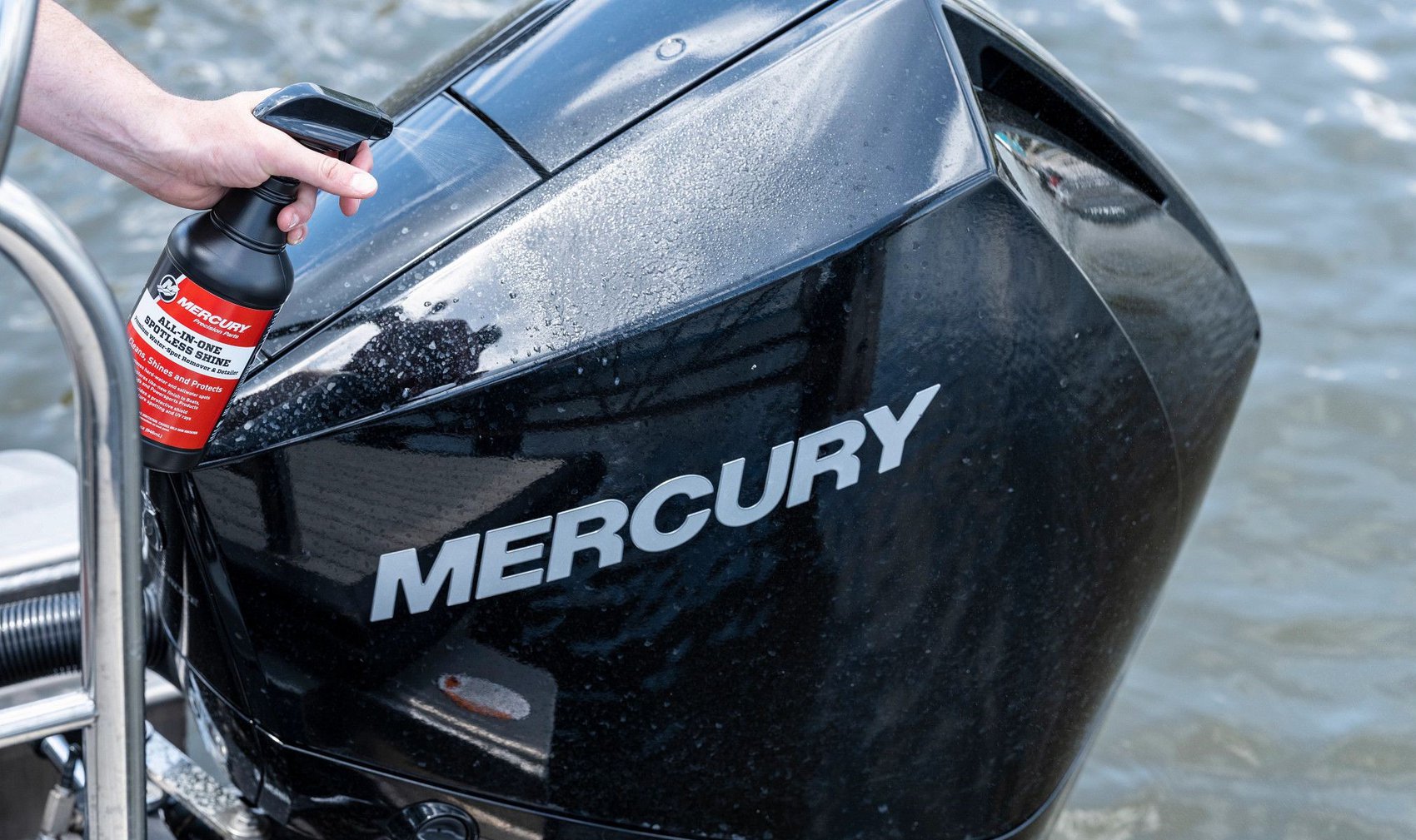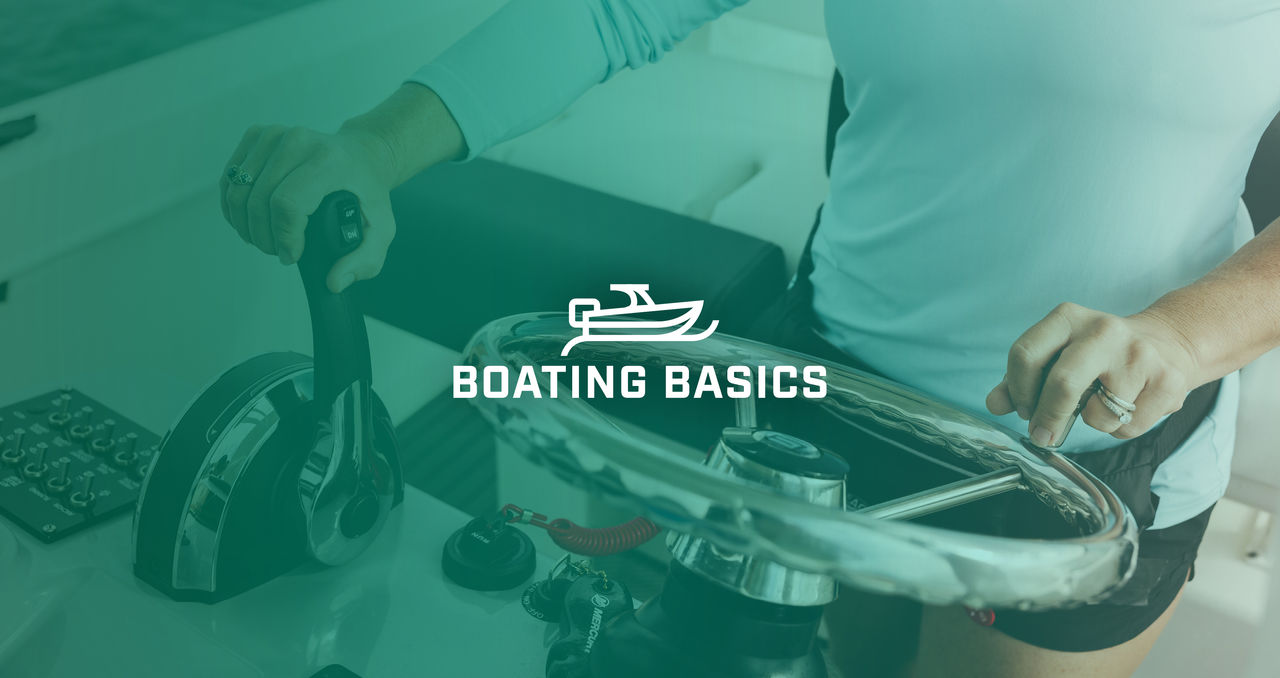If you are new to boating, the “Boating Basics” series of videos from Mercury Marine provides an engaging, educational guide to our favorite pastime that will help you gain confidence on the water. Even if you are an experienced boater, you might pick up a few tips!
When you fill your boat with family, friends and gear for a fun day on the water, the load can have an impact on the vessel’s performance. Luckily, your boat is equipped with the tools you need to offset the weight and optimize the vessel’s running angle through the water: the trim and tilt system. Your boat also may be equipped with trim tabs, another useful tool.
Trim and tilt are parts of a single hydraulic system that lets you pivot your outboard engine or sterndrive into and out of the water and adjust its angle within the water. You operate the trim and tilt system by pressing the up and down arrow buttons on the side of the engine control handle.
Trim allows you to make slow, precise adjustments to the engine’s lower unit in the water while the boat is underway. Trimming in, by pressing the “Down” button, brings the lower unit closer to the transom of the boat, while trimming out with the “Up” button rotates the lower unit away from the transom. This alters the angle of the prop shaft and the thrust the propeller creates through the water, a key factor in your boat’s performance and efficiency at speed.
Once you’ve trimmed out to the fullest extent, the tilt function takes over. It enables you to raise and lower the engine quickly. Typically, you use the tilt function to lower your engine after launching the boat and to tilt it all the way up when pulling the boat out of the water. You can control tilt by using the buttons on the engine control handle as well as by pressing buttons located on the engine itself, if you have an outboard.
Many boats, including most sport boats and fishing boats, have hulls that are designed to rise in the water as they accelerate due to hydrodynamic lift – commonly known as “getting on plane” or “planing.” Planing decreases the water’s drag on the hull and increases the boat’s overall speed and fuel efficiency.
To get on plane, make sure you have plenty of water depth under the boat, then trim the lower unit all the way in. This is called “negative trim” or the “full tuck” position. Now, when you accelerate, your prop will be angled correctly to thrust water downward, lifting the boat’s stern and helping it to get on plane.
Once your boat is on plane, trim the drive leg out, adjusting the prop angle until the boat is running as level as possible. Be sure to do this slowly, because small taps on the “up” button can have a large impact on the boat’s running attitude. If your boat starts to “porpoise,” with the bow bouncing up and down, you will know you have trimmed the drive leg out too far. With practice, you will find the sweet spot that gives you the best performance, efficiency and control. It will also give you a smoother, quieter ride in choppy waters.
If you have a large group of passengers or a lot of gear on board, and your boat feels sluggish when you try to accelerate to get on plane, come back to a stop and try redistributing the load. Asking a passenger or two to move forward can be very effective. The additional weight in the bow will help the boat to level out more quickly and efficiently.
You should always try to distribute the load evenly on board before you leave the dock. But sometimes, that simply isn’t possible, and one side of the boat is heavier than the other, causing it to lean or “list” to that side. If your boat is equipped with trim tabs, you can use them to help balance the load.
Trim tabs are hydraulically operated metal plates fastened to the bottom of a boat’s transom on either side of the engine. When you lower trim tabs, the force of the water on the tabs will lift the stern of the boat and lower the bow. Each trim tab also can be operated independently. The buttons that control the port and starboard trim tabs are mounted at the helm, usually on the driver’s righthand side. Trim tab labels vary, but most have buttons marked, “Bow Up” and “Bow Down.”
If your boat is listing to the port (or left) side, for example, and you press the starboard “Bow Down” button, it will bring the starboard side down and help to counterbalance the load and level out the boat. Click on the video links below to see a graphic demonstration of how this works.
Trim tabs also can be operated in tandem. If your boat raises its bow so high when on plane that you have difficulty seeing the water ahead, you can fix the issue by pressing both “Bow Down” buttons simultaneously. As the trim tabs lower into the water, the water hitting them will lift the stern and in turn, lower the bow.
Once you have mastered using trim and trim tabs, you will be impressed by the improvements you can make in the boat’s performance, efficiency, comfort and safety. These are just some of the tools you have onboard to help you make the most of each boating adventure.




